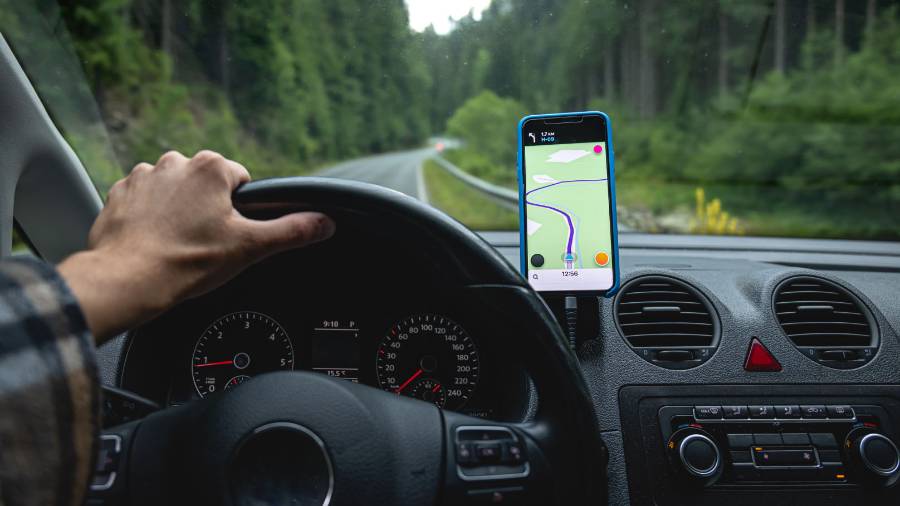How to start saving for a car
Saving up for a car in advance can make it easier to afford the type of car or model you want. It can also help you feel more in control of the costs that come with car ownership.
Whether you’ve just passed your driving test or you’ve owned a car before, it's a good idea to make a plan. Setting a clear savings goal can help you stay focused and feel more confident about your decision.
Before you start saving, ask yourself:
- What kind of car do I need or want?
- How much is it likely to cost?
- When would I like to buy it?
Knowing the answers to these questions gives you something to work towards. It’ll also help you plan how much to save and how long it might take.
What to think about when buying a car
Of course, there’s more to buying a car than just the price tag. You’ll then need to think about what will suit your budget and your needs. Here are some other things to consider:
- New or used car
New cars cost more but often come with warranties and need fewer repairs at first. Used or second-hand cars are usually cheaper but may need more maintenance. Do your research, compare different vehicles and choose what works best for your budget.
- Running costs
The cost of owning a car can add up. Make sure to plan for:
- Car insurance
- Fuel (or charging, if you have an electric or hybrid vehicle)
- Road tax
- MOTs and servicing
- Repairs
- Parking
These costs can vary depending on the type of car you choose. For example, car insurance groups can affect how much you’ll pay for cover, so it helps to check that before choosing a car.
- Size and type of car
Think about how you’ll use the car. Smaller cars are cheaper to run, easier to park and often cheaper to insure because they cost less to repair. Larger cars may be better for long trips or carrying passengers, but they can be more expensive to insure as they may cause more damage in an accident and cost more to fix. Meanwhile, electric and hybrid cars can save money on fuel and have a lower carbon footprint but might cost more to buy upfront.
- Safety and reliability
Look at safety ratings and online reviews to help find a car that’s known to be reliable. If you’re buying a used car, look at how many miles it’s done and whether it has a full service history.
- Buying from a dealer or private seller
Dealers may offer warranties or a return policy. Private sellers can be cheaper, but you might not have as much protection if something goes wrong. Always check the car’s paperwork carefully, including the logbook, MOT and service records.
- Leasing a car
Leasing a car, rather than buying one, can be more affordable in the short term. You'll usually pay lower upfront costs and a fixed monthly fee, which could make it easier to budget. But you’ll need to make sure the monthly payments fit your finances, as missing one could affect your credit score. You won’t own the car and there could be extra charges like going over milage or wear and tear. You’ll also need comprehensive insurance, which can be more expensive and you won't get any money back at the end.

Planning your budget
Once you know what kind of car you’re saving for, it’s time to plan your car savings budget. Think about how much you can realistically afford to put aside each week or month.
Remember, it’s better to save a small amount regularly than try to save too much and give up. Try to stick to a routine that works for your income and lifestyle.
Don’t forget to include running costs we mentioned earlier, including car insurance, road tax, fuel, servicing and parking, in your overall budget.
Use our savings goal calculator to help you plan what to save.
Choosing the right savings account
A helpful way to manage your money and stay on track is by opening a savings account. It can keep your car savings separate from your everyday spending, and some accounts also offer interest which can help your money grow over time.
There are different types of savings accounts, depending on how long you plan to save and whether you’ll need to take money out.
These accounts let you take out money whenever you need to, without paying a fee or giving notice. They’re good if you:
- Want to add money bit by bit
- Might need to pay for insurance or other costs
- Want the freedom to move money around if interest rates go up elsewhere
- Want flexible access to your money when you’ve reached your goal or found the right car
Easy access savings are a popular option for short-term saving or for anyone just getting started. But remember, the interest rate on these accounts can change. It’s often lower than other types of accounts but some currently offer higher rates, so it’s worth checking the terms.
These accounts lock your money away for a set time, usually between one and five years. You agree not to touch the money during that time.
In return, you often get a higher interest rate compared to easy access accounts. That can make them a good option if:
- You’re saving for a long-term goal and won’t need the money straight away
- You want to avoid the temptation to spend your savings
- You’d like to earn more interest and grow your savings faster
Fixed term savings options include savings bonds and fixed rate ISAs. Just be sure that you’re happy to leave your money untouched until the term ends, as early withdrawals usually come with a penalty.
Cash ISAs are tax-free savings accounts where you don’t pay tax on the interest you earn. You can save up to a certain limit each tax year.
There are different types of cash ISAs:
- Easy access ISAs let you take money out whenever you need to
- Fixed rate ISAs lock your money away for a set time and may offer a higher interest rate
Cash ISAs are a smart option if you want your savings to grow tax-free. Just check the terms, including any limits on withdrawals or how much you can pay in each year.
Read more: What is an ISA and how do they work?
Tips for reaching your savings goal
Sticking to your savings plan can feel easier with a few simple tricks. Here are some helpful ways to stay on track and build up your savings over time:
- Set up a Direct Debit or standing order so money goes into your savings account automatically each month. This can help you build the habit without having to think about it
- Add extra money when you can. If you get any birthday money, a bonus or any extra income, try putting some of it into your savings. Even small amounts can add up over time
- Track your progress by keeping an eye on how much you’ve saved. Seeing your savings add up can help you stay motivated and make your goal feel more real
- Review your plan if things change. If your income or goal changes, update your plan and budget. That way, you can stay on track without feeling stressed
Need extra help?
Saving for a car can feel like a big task, but with a clear plan, it’s much easier. If you’re unsure what savings account to choose, you can speak to an independent financial advisor for more help.
Key takeaways
- Set a clear savings goal. Think about the kind of car you want, how much it will cost and when you’d like to buy it. This will help you work out how much to save and gives you a clear target to work towards
- Factor in all the costs. Remember to include running costs, like car insurance, tax, fuel and parking, in your overall budget to avoid surprises later on
- Use a savings account to stay on track. Choose one that suits your saving style, whether that’s easy access or fixed term, and take advantage of interest to grow your money over time







